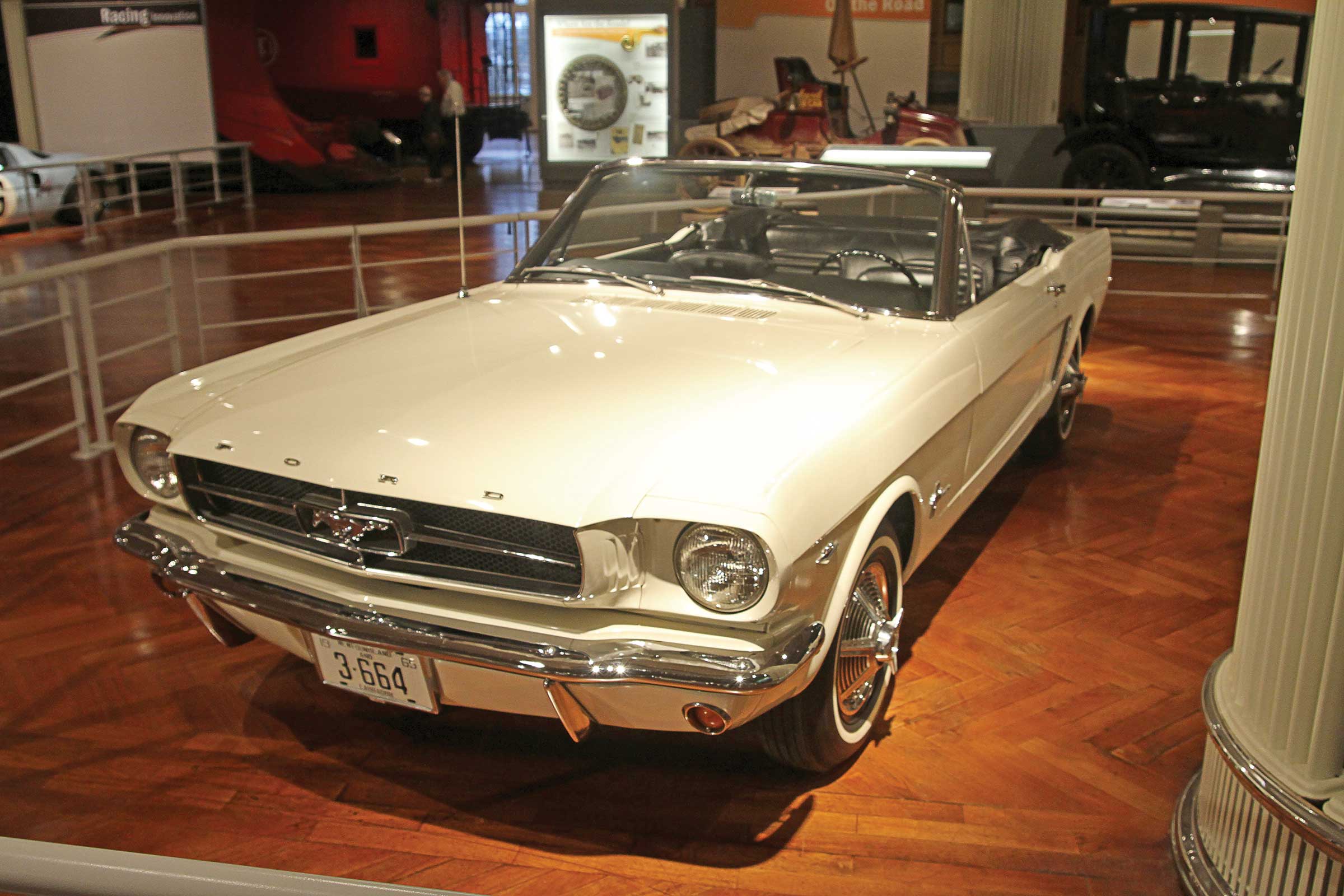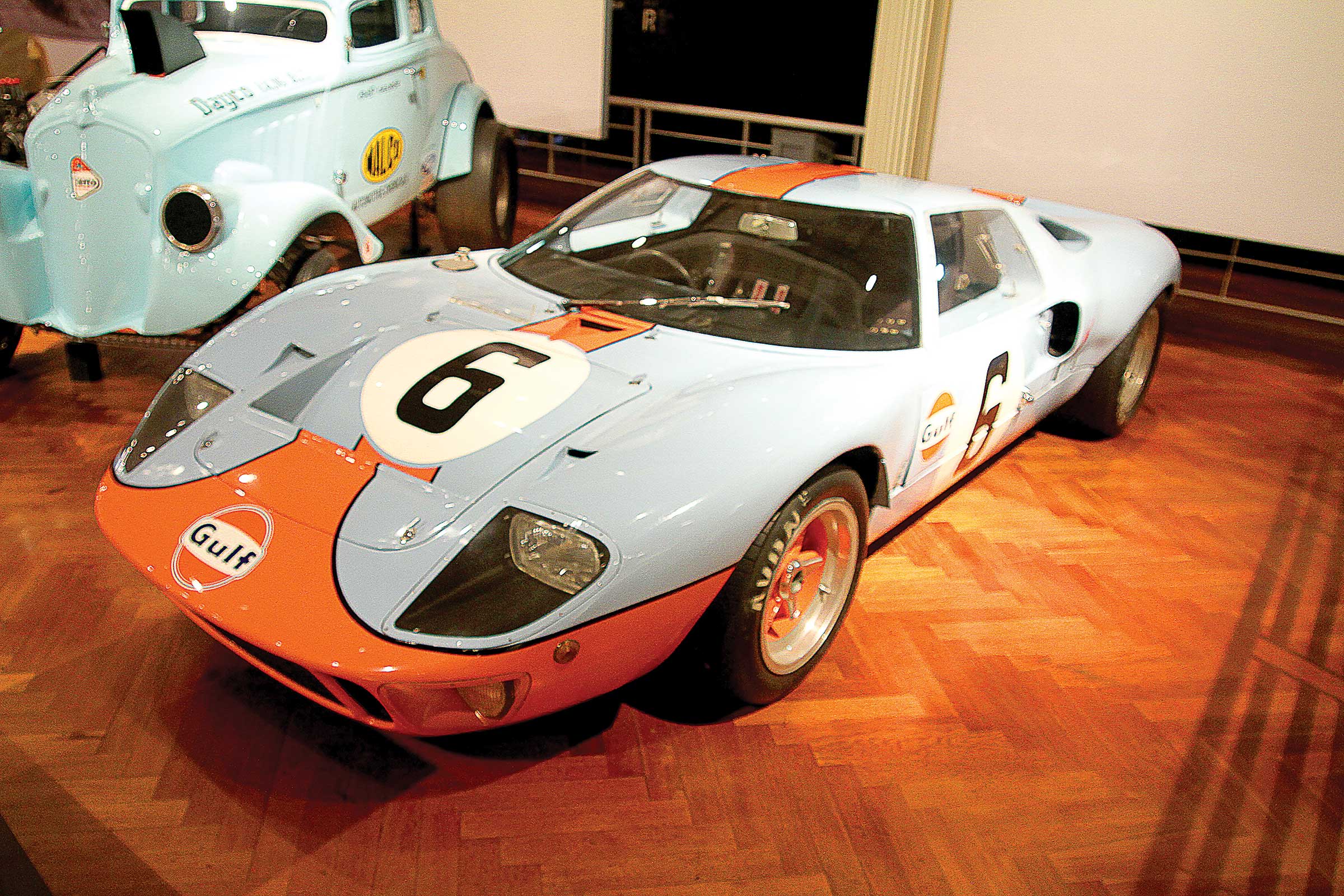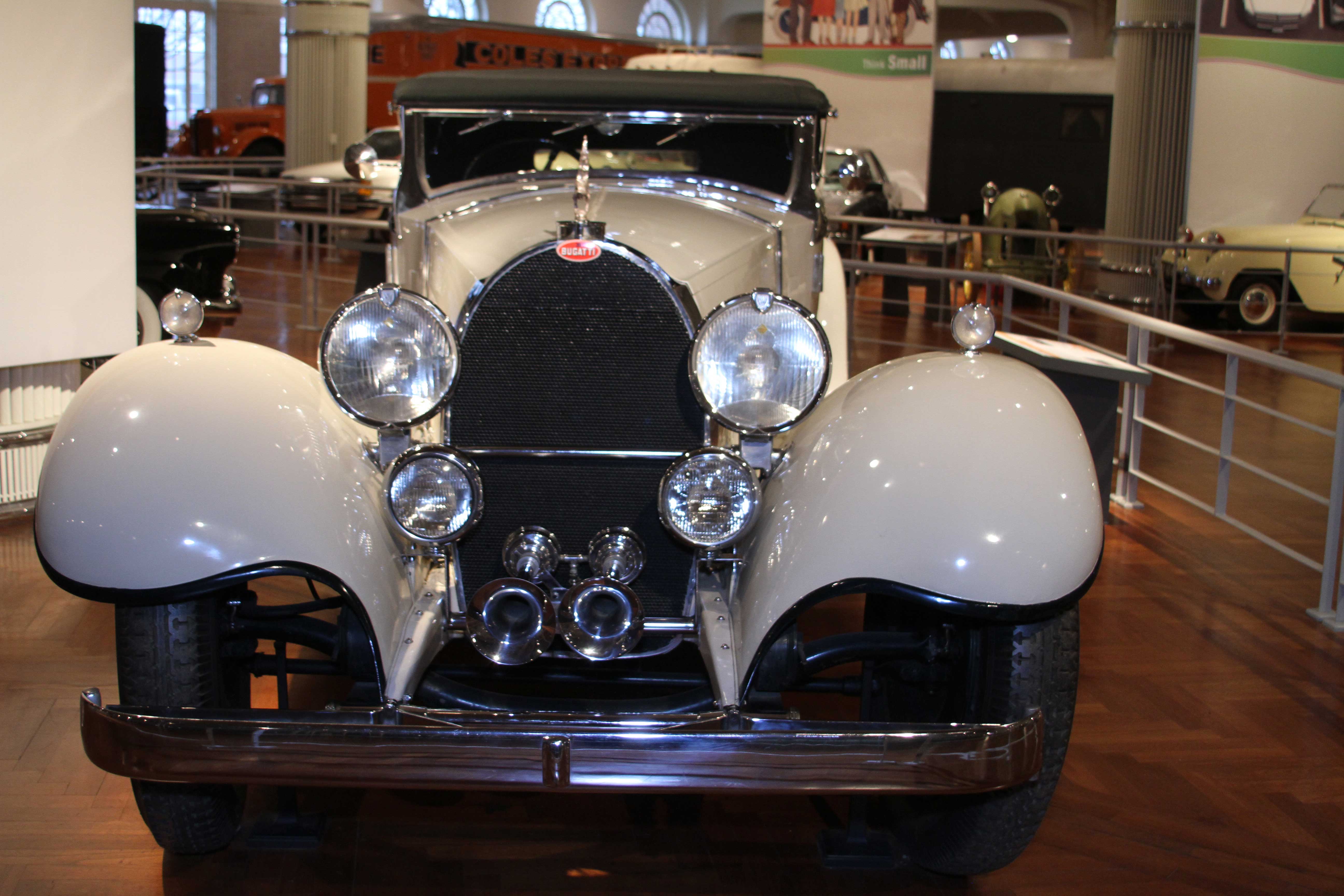
In 1929, Henry Ford opened a huge museum complex in Dearborn, Michigan dedicated to the American history of engineering and technology. It was intended to honour Thomas Edison’s contribution to modern day progress, but it also paid tribute to Henry Ford’s contributions to the automotive age.
Over the years, this institution has been revised and updated a number of times. In its latest incarnation, it is now known as The Henry Ford and it includes the huge museum building, Greenfield Village and tours of the famous Ford Rouge River factory. Of course there is a big car collection and, in its own right, the 100-plus cars from various manufacturers make this a must-see. If I had a grandson, I would take him here and spend half the day teaching him about the cars and how they tell the story of the automotive age thus far. Museum collections often go for the superlatives and the spectacular but, in addition, this collection also has notables that might seem mundane at first, but they tell important parts of the history of cars in America.
If I had a grandson, I would take him here and spend half the day teaching him about the cars and how they tell the story of the automotive age thus far. Museum collections often go for the superlatives and the spectacular but, in addition, this collection also has notables that might seem mundane at first, but they tell important parts of the history of cars in America.
We are presented with the evolution of the car as told in significant examples from the 1896 Dureya Motor Wagon and Ford’s Quadricycle, through to the 2009 Ford Focus. The Focus may not be amazing but it does represent the modern trends to smaller and more efficient cars. In a way, it is the modern successor to the once-dominating Model T Ford.
Only about one-third of the collection is made up of Fords but it does include some milestone Ford vehicles such as:
• the 1896 Quadricycle
• the 1901 Sweepstakes – which won a challenge race against a Winton and helped build Ford’s reputation
• the 1902 “999” racer – its sister car, the ‘Arrow’ set a speed record on the ice of nearby Lake St. Clair
• two 1932 Fords – the first popular priced car with a V8 engine – one car in stock form and the other as a 50s-style ‘Hot Rod’
• a 1956 Thunderbird convertible
• a 1956 F-100 pickup once used by Bobby Unser as a tow vehicle for his Pike’s Peak race car
• the 1965 Mustang with serial number ‘1’ – originally purchased by an airline pilot in St. John’s, NL
• a 1967 Ford Mark IV which won the 24 Hours of Le Mans
• Bill Elliott’s NASCAR Thunderbird which set a NASCAR all-time speed record – 212.8 mph (342.468 km/h) at Talladega in 1987. When I was there, the Le Mans car was out on loan, but its place was taken by a stunning, race-winning Ford GT-40. For this, the 50th anniversary of the introduction of the Mustang, the ‘No. 1’ Mustang and the 1961 prototype ‘Mustang I’ will be in and out of the museum doing various duties at other events throughout the year.
When I was there, the Le Mans car was out on loan, but its place was taken by a stunning, race-winning Ford GT-40. For this, the 50th anniversary of the introduction of the Mustang, the ‘No. 1’ Mustang and the 1961 prototype ‘Mustang I’ will be in and out of the museum doing various duties at other events throughout the year.
Some other notable cars here include a classic Checker taxicab, a 1955 Chevrolet ‘convertible hardtop’, a 1955 Chevrolet Corvette, a 1986 Ford Taurus (the first modern incarnation of automobile streamlining), a GM EV1 (a 1990s electric car trial balloon), 1983 and 1998 Honda Accords and a 1996 Toyota Corona (examples which illustrate the challenge the Japanese manufacturers had mounted in the American market), a 1956 Chrysler 300B and a 1965 Pontiac GTO (America’s ‘muscle cars’), a 1950 Plymouth Suburban all-steel station wagon and a 1984 Plymouth Voyager minivan (forerunners of the waves of wagons and vans to come), and a 1991 Ford Bronco (an early version of the now-ubiquitous SUV).
 |
 |
This is only a sample of the many cars on display, each interesting in their own right, but there are two cars I especially wanted to see: the 1931 Bugatti Royale and the 1965 ‘Goldenrod’, a land speed record (LSR) car.
I have a special interest in LSR cars and had never seen the Goldenrod, despite it spending some time at the Ontario Science Centre in Toronto during its touring days years ago. The Englishman Donald Campbell had toiled mightily at a new land speed record in the early 1960s with his multi-million dollar ‘Bluebird’ project, trying to beat John Cobb’s near 400-mph mark from 1947. Californian Craig Breedlove, with his J-47 jet-powered ‘Spirit of America’ set an FIM record of over 407 mph in 1963. Campbell was beset by problems at his Australian dry-lake venue, but he managed to pull off a 403-mph run a few months later. This was of dubious value – it was good enough for the FIA’s wheel-driven speed record, but still less than Breedlove’s mark.
 Then, the next year, the Summers brothers with the smaller, arrow-style Goldenrod - powered by four naturally-aspirated, seven-litre Chrysler Hemis - broke Campbell’s record with a 409-mph average speed at the Bonneville Salt Flats in Utah. Talk about David and Goliath. Their record for a wheel-driven car stood for 25 years.
Then, the next year, the Summers brothers with the smaller, arrow-style Goldenrod - powered by four naturally-aspirated, seven-litre Chrysler Hemis - broke Campbell’s record with a 409-mph average speed at the Bonneville Salt Flats in Utah. Talk about David and Goliath. Their record for a wheel-driven car stood for 25 years.The Goldenrod has been nicely restored and, as is always the case with the large, streamlined land speed record cars, it is an eye-catching part of the Dearborn collection; here it represents the whole history of establishing automobile speed records.
The Bugatti Royale, on the other hand, represents the monster supercars of the ‘30s as the top of the heap. “Longer than a Duesenberg. Twice the horsepower of a Rolls-Royce. More costly than both put together. The Bugatti Royale was the ultimate automobile, making its owners feel like kings.”
The Royale is 5,918 mm (233 in.) long on a 4,293 mm (169 in.) wheelbase, weighing in at 3,175 kg (7,000 lb). The engine is a massive 12.7-litre straight eight, a motor so powerful that many of them were used to power railcars on the French railway system. By comparison, the current Audi A8L, Audi’s largest sedan is 5,267 mm (215 in.) long and it weighs 2,080 kg (4576 lb).
Whether these are the ‘best ever’ Bugattis could be argued – there are a lot of magnificent and racier contenders for this honour – but they sure are big and impressive. I saw this car the first time I visited this museum in the 1960s; I didn’t know anything about it then but I knew it was ‘something’ as it towered over all other cars on display.
 Unfortunately for Ettore Bugatti, he introduced this car just as the Great Depression hit and the potential market for such extravagant and expensive cars collapsed. He built only six, a mere three of which were sold before WWII. The one on these pages was sold to a German obstetrician and after the war, it wound up in a New York scrap yard where it sold to a discerning car collector for just $400. He restored it and eventually donated it to The Henry Ford. The most recent auction sale for a Royale was in 1987 when it sold for $9.7 million. Obviously, in today’s hot collector car market, any Royale would sell for multiples of that 25-year-old price.
Unfortunately for Ettore Bugatti, he introduced this car just as the Great Depression hit and the potential market for such extravagant and expensive cars collapsed. He built only six, a mere three of which were sold before WWII. The one on these pages was sold to a German obstetrician and after the war, it wound up in a New York scrap yard where it sold to a discerning car collector for just $400. He restored it and eventually donated it to The Henry Ford. The most recent auction sale for a Royale was in 1987 when it sold for $9.7 million. Obviously, in today’s hot collector car market, any Royale would sell for multiples of that 25-year-old price.If you go to see these cars, make sure you leave yourself time to see the other parts of this exceptional museum. And don’t forget the other half – Greenfield Village – which has many relocated buildings significant to the history of technology in America, such as the Wright brothers bicycle shop from Dayton, Ohio and Thomas Edison’s Menlo Park laboratory.
If you are planning a trip, I recommend the weekend of June 14-15, when you can see the cars in the museum as well the ‘Motor Muster’ cruise-in, a big showcase within Greenfield Village. But regardless of the time, make sure to put The Henry Ford on your bucket list.






















